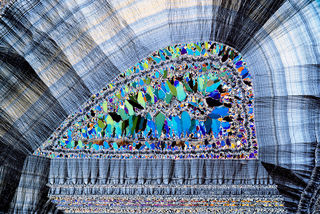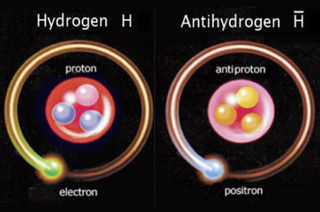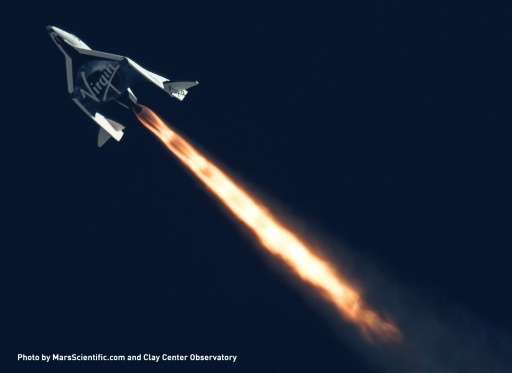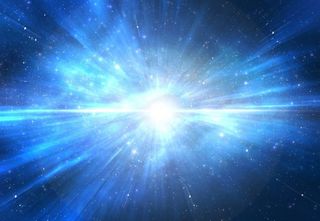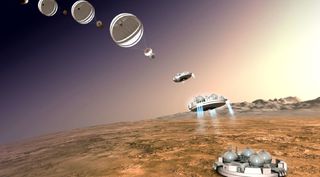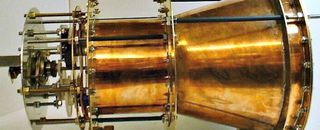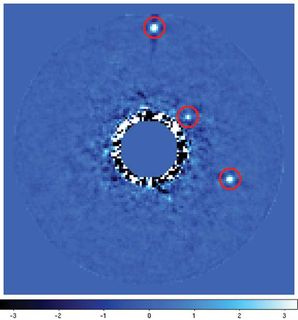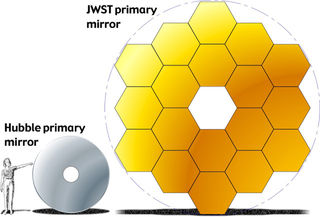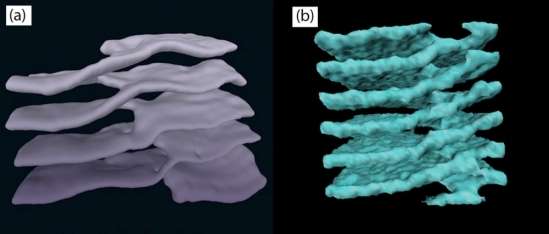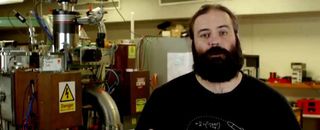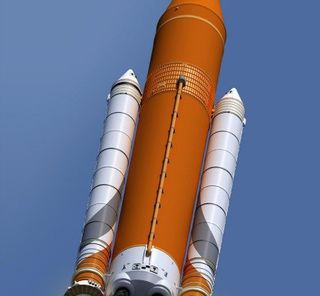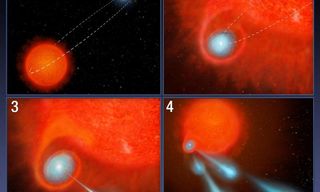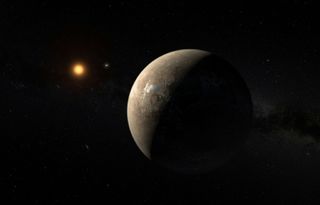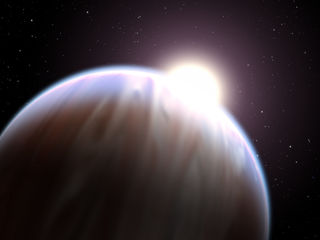Space Digest
October 2016 - What’s Hot in the Universe
Greetings fellow space fans and explorers of the wonders of this universe we all call “home”. The following column is a brief round-up of some of the more interesting, well in my view anyways, news items from the universe over the past month. My intent is not to go into too much detail as I don’t have the knowledge to do so. Rather my aim is to give a brief summary of the headlines I come across and to post links to articles so that the reader can follow up on stories of interest to them in particular.
- Digest compilation by Ian Kraack
-
Our planet may be blue from the inside out. Earth’s huge store of water might have originated via chemical reactions in the mantle, rather than arriving from space through collisions with ice-rich comets.
This new water may be under such pressure that it can trigger earthquakes hundreds of kilometres below Earth’s surface – tremors whose origins have so far remained unexplained.Posted: Friday 27 January 2017 -
After more than two decades of trying a team at C.E.R.N. have announced the first ever successful measurement of a spectral line for an antihydrogen atom.
The idea of antimatter was first posited in 1928 by British physicist Paul Dirac and suggests that for every particle of matter there is a corresponding particle of antimatter in a form of symmetry. The Big Bang should have created matter and antimatter in equal amounts to maintain that symmetry. But the universe as we know it is dominated by matter, with little antimatter present at all. So figuring out why this asymmetry exists would help us understand the origin and evolution of this wondrous universe we all call home.Posted: Tuesday 20 December 2016 -
Virgin Galactic’s new SpaceShip two, dubbed VSS Unity, has successfully been tested in the skies over the Mojave Desert. This is an important first step back on the road to space tourism after the company suffered a fatal crash of its first SpaceShip Two back in October of 2014.Posted: Saturday 3 December 2016
-
Scientists from the Imperial College in London and the Perimeter Institute in Canada have come up with a radical new theory that suggests that the speed of light is not constant as Einstein suggested. The assumption that the speed of light is constant, and has ever been so, underpins much of our understanding of physics. But researchers have suggested that the speed of light may have been much higher in the early universe. Now they have put forward a prediction that will allow this radical idea to be tested. "The idea that the speed of light could be variable was radical when first proposed, but with a numerical prediction, it becomes something physicists can actually test. If true, it would mean that the laws of nature were not always the same as they are today." Professor João Magueijo from Imperial College London, and one of the theory’s originators, has said.Posted: Friday 25 November 2016
-
The European Space Agency’s lander Schiaparelli crash landed on Mars after an unexplained saturation of its Inertial Measurement Unit sent bad data to the lander’s computer system forcing an early deployment of its parachute. The glitch that caused the bad data was only one second in duration. But that was enough to fool the lander’s system into thinking it had already landed, or was just about to land, when in fact it was still 3.7 km above the Martian surface. The resulting free-fall after the parachute was jettisoned was devastating to the lander.Posted: Wednesday 23 November 2016
-
What has rocked the astrophysics world is the fact that this engine doesn’t use heavy and inefficient rocket fuel. Instead it bounces microwaves around in a cone-shaped cavity to generate thrust, which is theorised to be enough to take humans to Mars in 70 days (a journey that normally takes between 150 – 300 days). The problem is it seems to defy our known laws of physics by not producing that thrust out the back of the engine like a conventional rocket.
The paper has been peer reviewed and was published in the American Institute of Aeronautics and Astronautics (AIAA)’s Journal of Propulsion and Power, December 2016 print edition.Posted: Wednesday 16 November 2016 -
Using a new instrument called the Coronagraphic High Angular Resolution Imaging Spectrograph (CHARIS for short) a team from Princeton University has been able to capture the light reflected from an exoplanet in the HR 8799 planetary system. CHARIS works in conjunction with the Subaru Telescope in Hawaii and is part of a long-time collaboration between Princeton University, the University of Tokyo, and the National Astronomical Observatory of Japan, which operates the Subaru Telescope.Posted: Friday 11 November 2016
-
More than 20 years on from the start of the project the James Webb Space Telescope is finally finished construction and is on track for launch in 2018. The James Webb will be more powerful than Hubble primarily because it will have the biggest mirror to fly in space, 7 times the light collecting area of Hubble’s Mirror, but also because James Webb will be looking in the infrared portion of the spectrum, which Hubble is not very sensitive to.Posted: Wednesday 2 November 2016
-
According to research published in the journal Physical Review C, neutron stars and cell cytoplasm have something in common: structures that resemble multi-story parking garages. This discovery comes as a result of collaboration between scientists from UC Santa Barbara and University of Indiana. Their report, published in Physical Review C, explores the relationship between two very different models of matter.Posted: Tuesday 1 November 2016
-
Post-doctoral fellow at Canterbury University Sarah Kessans was one of 120 applicants invited to NASA’s Johnson Space Centre for a week in September. This is a big deal because just 50 of those people will be short-listed for final interviews to choose between 8 and 14 candidates to go on to the 22nd Astronaut Candidate Class for August of 2017.Posted: Monday 10 October 2016
-
Recent PhD graduate Paddy Neumann has just signed a deal with Airbus Space & Defence to launch his record-breaking prototype ion drive to the ISS for testing. Mr Neumann made headlines in 2015 when his ion drive smashed NASA’s record for fuel efficiency. Now it will be taken up to the International Space Station to undergo testing in a real operational environment. What makes this exciting is that, if they can get it to work, it will revolutionise space travel. This is because an ion drive does not require the massive amounts of fuel that conventional rockets do. Instead they heat up metal to turn it into plasma, which is ejected from the rear of the drive to provide propulsion. It would also have the added benefit of cleaning up the man-made debris floating around in space as this could be the source of that “fuel”.Posted: Friday 7 October 2016
-
In early October Boeing CEO Dennis Muilenburg commented that the first person to set foot on Mars was going to get there in a Boeing spacecraft. This came after SpaceX boss Elon Musk revealed his vision of how man would get there in September. Given that Boeing was a part of the build of the Saturn V rocket that took man to the moon in the 60s and was also contracted by NASA to build their SLS rocket, and that Boeing is SpaceX’s biggest rival, these are probably not just idle words.Posted: Thursday 6 October 2016
-
A red giant star, V Hydrae 1200 lightyears from Earth, has been detected shooting giant plasma balls roughly twice the size of Mars into space. Scientists estimate that this has been happening annually every 8.5 years for at least the last 400 years or so and puzzles scientists because bloated red giants like V Hydrae shouldn’t be behaving in this manner. This has led to speculation that there is a secondary star orbiting V Hydrae causing the ejections.Posted: Thursday 6 October 2016
-
Scientists at Marseille’s Astrophysics Laboratory in France have used computer simulations to calculate some size and surface details about our nearest exoplanetary neighbour. Normally analysis of an exoplanet’s dimensions is done using measurements in its host stars brightness as the exoplanet transits across in front of it from Earth’s perspective. However, no such transit has occurred with Proxima Centauri b as of yet. So instead the team in Marseille had to rely on computer simulations. And those simulations seem to predict that Proxima Centauri b is covered in liquid oceans.Posted: Thursday 6 October 2016
-
Astronomers have used a novel technique to discover an exoplanet by observing its orbital motion. KIC 7917485b is the first planet to be identified around a Type-A main sequence star from its orbital motion and the first to be found near that type of star’s “habitable zone”. Type-A stars are bigger and hotter than most other stars in the Kepler catalogue and tend to change brightness at regular intervals. By measuring apparent delays in that interval scientists can calculate the apparent oscillations of the star’s orbital motion which would be due to the gravitational effects of a nearby planet.Posted: Tuesday 4 October 2016

